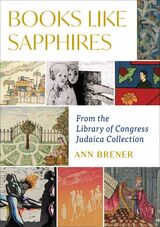13 start with S start with S
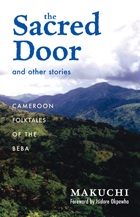
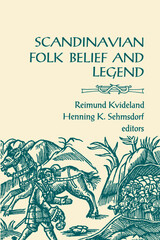
An entertaining collection of over 400 folk tales of legends, stories, and magic. Translated from the original Norwegian, Danish, and Swedish, this highly acclaimed work is perfect for bedside or fireside reading.

Boria Sax traces the idea of the animal bride through history by drawing upon legends and literary works from throughout the world. He pays particular attention to Eurasian sources which support his thesis that the animal bride theme originated among the serpent cults of Mesopotamia and southeastern Europe. Through time, the details of the animal bride theme changed as a result of mankind's changing perceptions of the natural world. In general, this study is an account of myths and beliefs that have surrounded animals—and women—during the rise of modern humankind.
The Serpent and the Swan identifies and explains images of the animal bride that pervade, enliven, and enrich our culture. The bride becomes Eve taking an apple from the serpent, Medea casting spells, Cinderella riding to the royal ball in a pumpkin coach, and the Little Mermaid rising from the waves.
The Author: Boria Sax, who holds a doctorate in German and intellectual history, is the author of The Frog King and The Parliament of Animals, among other books.
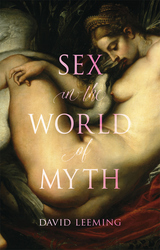
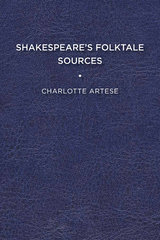
Published by University of Delaware Press. Distributed worldwide by Rutgers University Press.

Antiquity’s original didactic poet.
Hesiod describes himself as a Boeotian shepherd who heard the Muses call upon him to sing about the gods. His exact dates are unknown, but he has often been considered a younger contemporary of Homer.
The first volume of this revised Loeb Classical Library edition offers Hesiod’s two extant poems and a generous selection of testimonia regarding his life, works, and reception. In Theogony, Hesiod charts the history of the divine world, narrating the origin of the universe and the rise of the gods, from first beginnings to the triumph of Zeus, and reporting on the progeny of Zeus and of goddesses in union with mortal men. In Works and Days, Hesiod shifts his attention to humanity, delivering moral precepts and practical advice regarding agriculture, navigation, and many other matters; along the way he gives us the myths of Pandora and of the Golden, Silver, and other Races of Men.
The second volume contains The Shield and extant fragments of other poems, including the Catalogue of Women, that were attributed to Hesiod in antiquity. The former provides a Hesiodic counterpoint to the shield of Achilles in the Iliad; the latter presents several legendary episodes organized according to the genealogy of their heroes’ mortal mothers. None of these is now thought to be by Hesiod himself, but all have considerable literary and historical interest.
Glenn W. Most has thoroughly revised his edition to take account of the textual and interpretive scholarship that has appeared since its initial publication.
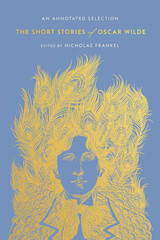
An innovative new edition of nine classic short stories from one of the greatest writers of the Victorian era.
“I cannot think other than in stories,” Oscar Wilde once confessed to his friend André Gide. In this new selection of his short fiction, Wilde’s gifts as a storyteller are on full display, accompanied by informative facing-page annotations from Wilde biographer and scholar Nicholas Frankel. A wide-ranging introduction brings readers into the world from which the author drew inspiration.
Each story in the collection brims with Wilde’s trademark wit, style, and sharp social criticism. Many are reputed to have been written for children, although Wilde insisted this was not true and that his stories would appeal to all “those who have kept the childlike faculties of wonder and joy.” “Lord Arthur Savile’s Crime” stands alongside Wilde’s comic masterpiece The Importance of Being Earnest, while other stories—including “The Happy Prince,” the tale of a young ruler who had never known sorrow, and “The Nightingale and the Rose,” the story of a nightingale who sacrifices herself for true love—embrace the theme of tragic, forbidden love and are driven by an undercurrent of seriousness, even despair, at the repressive social and sexual values of Wilde’s day. Like his later writings, Wilde’s stories are a sweeping indictment of the society that would imprison him for his homosexuality in 1895, five years before his death at the age of forty-six.
Published here in the form in which Victorian readers first encountered them, Wilde’s short stories contain much that appeals to modern readers of vastly different ages and temperaments. They are the perfect distillation of one of the Victorian era’s most remarkable writers.
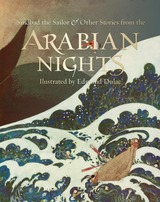
Four of the most well-known tales, translated by Laurence Housman, are reproduced in this collector’s edition: “Sindbad the Sailor,” “Aladdin and his Wonderful Lamp,” “The Story of the Three Calendars” and “The Sleeper Awakened.” Each is illustrated with exquisite watercolors by the renowned artist Edmund Dulac. The sumptuous illustrations reproduced here capture the beauty and timeless quality of these ever-fascinating stories, made at the zenith of early twentieth-century book illustration.

First published in 1960, Albert B. Lord’s The Singer of Tales remains the fundamental study of the distinctive techniques and aesthetics of oral epic poetry. Based upon pathbreaking fieldwork conducted in the 1930s and 1950s among oral epic singers of Bosnia, Croatia, and Serbia, Lord analyzes in impressive detail the techniques of oral composition in performance. He explores the consequences of this analysis for the interpretation of numerous works of traditional verbal art, including—in addition to South Slavic epic songs—the Homeric Iliad and Odyssey, Beowulf, the Chanson de Roland, and the Byzantine epic Digenis Akritas. A cardinal text for the study of oral traditions, The Singer of Tales also represents an exemplary use of the comparative method in literary criticism.
This third edition offers a corrected text of the second edition and is supplemented by an open-access website (in lieu of the second edition’s CD-ROM), providing all the recordings discussed by Lord, as well as a variety of other multimedia materials.

Grounded in the intellectual legacies of two pioneering scholars of oral literature, Milman Parry (1902–1935) and Albert Lord (1912–1991), Singers and Tales in the Twenty-First Century gathers reflections on what the study of oral poetry might mean today across diverse poetic traditions, especially in light of ongoing global transformations that have dramatically reshaped and destabilized the very notion of tradition. This collection of essays spans disciplinary perspectives from Classics and comparative literature to musicology and anthropology. Oral traditions from ancient Greece and modern southeastern Europe, on which Parry and Lord focused, remain central in the present volume, but the book also offers important perspectives from regions beyond Europe, especially across Asia.
The title’s “singers and tales”—both in the plural, as opposed to an individual “singer of tales”—signals interest both in the polyphony of oral traditions and in the proliferation of methodologies and objects of study inspired by the work of Parry and Lord. Their notion of what has become known as the Oral-Formulaic Theory remains a necessary starting point—but only a starting point—for research on a whole range of verbal and musical arts.
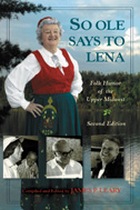
In the land of beer, cheese, and muskies—where the polka is danced and winter is unending and where Lutherans and Catholics predominate—everybody is ethnic, the politics are clean, and the humor is plentiful. This collection includes jokes, humorous anecdotes, and tall tales from ethnic groups (Woodland Indians, French, Cornish, Germans, Irish, Scandinavians, Finns, and Poles) and working folk (loggers, miners, farmers, townsfolk, hunters, and fishers). Dig into the rich cultural context supplied by the notes and photographs, or just laugh at the hundreds of jokes gathered at small-town cafes, farm tables, job sites, and church suppers. This second edition includes an afterword and indexes of motifs and tale types.
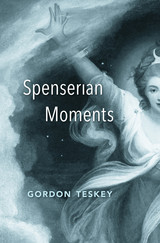
From the distinguished literary scholar Gordon Teskey comes an essay collection that restores Spenser to his rightful prominence in Renaissance studies, opening up the epic of The Faerie Queene as a grand, improvisatory project on human nature, and arguing—controversially—that it is Spenser, not Milton, who is the more important and relevant poet for the modern world.
There is more adventure in The Faerie Queene than in any other major English poem. But the epic of Arthurian knights, ladies, and dragons in Faerie Land, beloved by C. S. Lewis, is often regarded as quaint and obscure, and few critics have analyzed the poem as an experiment in open thinking. In this remarkable collection, the renowned literary scholar Gordon Teskey examines the masterwork with care and imagination, explaining the theory of allegory—now and in Edmund Spenser’s Elizabethan age—and illuminating the poem’s improvisatory moments as it embarks upon fairy tale, myth, and enchantment.
Milton, often considered the greatest English poet after Shakespeare, called Spenser his “original.” But Teskey argues that while Milton’s rigid ideology in Paradise Lost has failed the test of time, Spenser’s allegory invites engagement on contemporary terms ranging from power, gender, violence, and virtue ethics, to mobility, the posthuman, and the future of the planet. The Faerie Queene was unfinished when Spenser died in his forties. It is the brilliant work of a poet of youthful energy and philosophical vision who opens up new questions instead of answering old ones. The epic’s grand finale, “The Mutabilitie Cantos,” delivers a vision of human life as dizzyingly turbulent and constantly changing, leaving a future open to everything.

E. R. Eddison’s classic saga novel now in paperback—includes for the first time Eddison’s remarkable letter of introduction and his unabridged closing note
Styrbiorn the Strong tells the grand tale of Styrbiorn Olafsson, heir to the Swedish throne and known both for his impressive size and strength and his unruly, quarrelsome nature. Denied his birthright and exiled from Sweden, Styrbiorn becomes the leader of the Jomsvikings and sets out to reclaim the Swedish throne in the epic Battle of Fýrisvellir. A rediscovered classic, Styrbiorn the Strong is a tale reminiscent of the Old Norse sagas, a historical novel from one of the twentieth century’s most influential masters of fantasy.
READERS
Browse our collection.
PUBLISHERS
See BiblioVault's publisher services.
STUDENT SERVICES
Files for college accessibility offices.
UChicago Accessibility Resources
home | accessibility | search | about | contact us
BiblioVault ® 2001 - 2024
The University of Chicago Press




